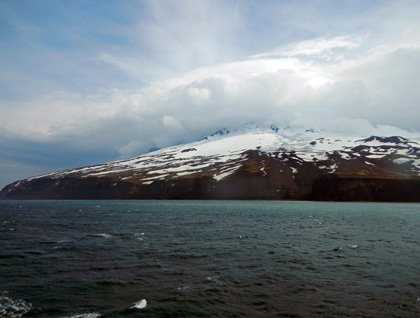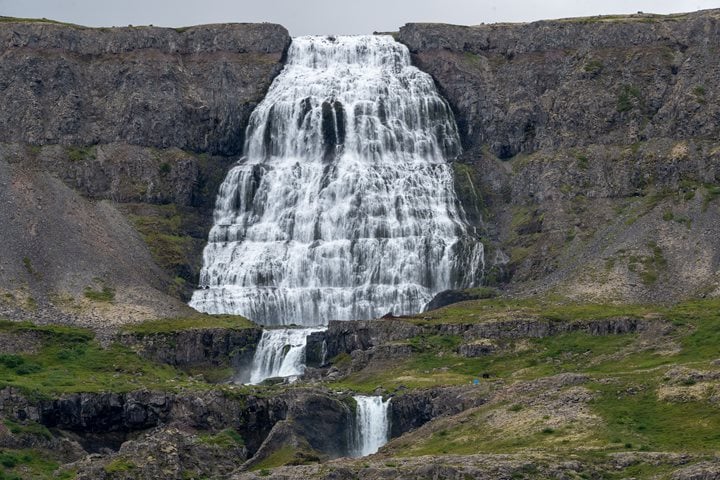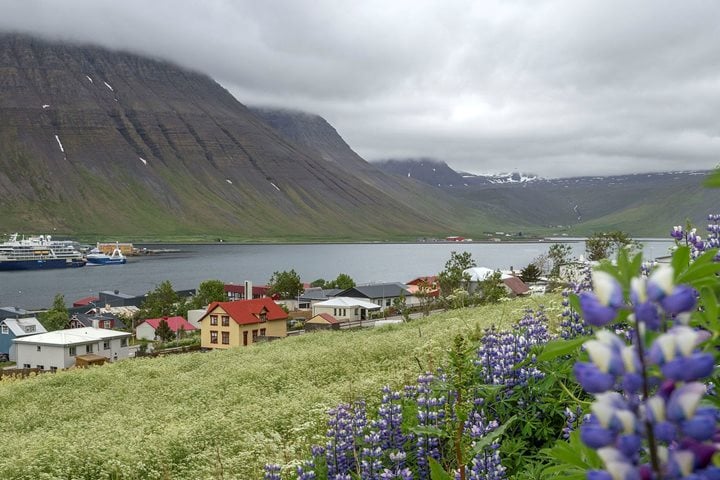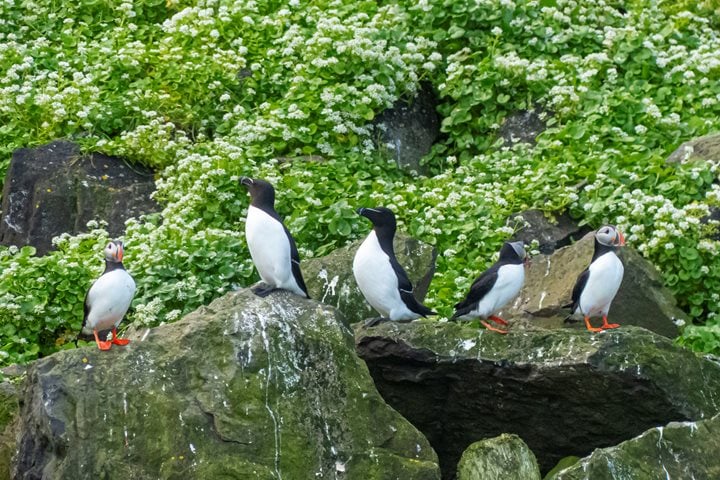Today was very special indeed because we were able to visit Jan Mayen Island in the far northern Atlantic Ocean. Jan Mayen is an active volcano, very similar to some of the other islands which lie along the Mid-Atlantic Ridge, including Tristan da Cunha and Ascension Islands in the south Atlantic and the Azores and Iceland in the north. But Jan Mayen is the farthest north on the ridge and is very difficult to get to; and once there it is often very difficult to get ashore. This is the first visit by National Geographic Explorer and only the second time that a Lindblad Expeditions/National Geographic ship has visited here.
The island was originally used as a whaling station by the Dutch in the 17th century. Two groups of men spent an entire winter ashore here and another group in Smeerenburg in Svalbard which we visited last week. The seven men who spent the winter of 1632-33 here all died, probably of trichinosis or scurvy, or both, but those at Smeerenburg survived. The island began to be used as a Norwegian weather station beginning in 1921 and that activity continues today. During WW II there was also an American presence here in the form of a US Coast Guard station called “Atlantic City.”
The volcano which makes up most of the island is called Beerenburg and at 2277m (7500’) is the tallest of the Atlantic Ridge volcanoes. After being welcomed to Jan Mayen by station manager Roy Nordfonn, we went ashore and were able to walk along a road across the tephra flows and take Zodiac cruises along the shore to see the thousands of northern fulmars nesting on the vertical cliffs and hundreds of eider ducks, many with ducklings, cruising in the sheltered waters of the bay in which we anchored the ship—Kvalrossbukta, or Walrus Bay.
After a wonderful morning exploring this extremely isolated but fascinating island we returned to the ship and then circumnavigated the entire island, which provided many excellent views of the volcano, the several spectacular glaciers which flow down its flanks and the new land which was produced by recent lava eruptions in 1970 and in 1985. Once we had sailed the entire coast we set our coarse for our next adventure—to Greenland









